(vi) Epidemiological data on which the Food-Related Health Risk Assessment is based
The standard limits for radioactive materials in food were considered based on the results of the Food-Related Health Risk Assessment. The following epidemiological data was used as the basis for evaluating food effects on health.
Basis of the Food-Related Health Risk Survey

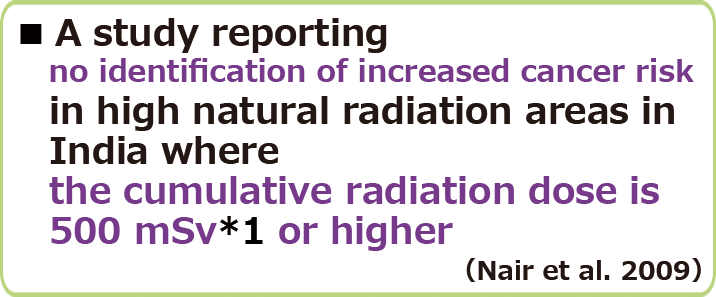
The data on atomic bomb survivors in Hiroshima and Nagasaki shows that the risk of leukemia mortality increased for the population exposed to radiation exceeding 200 mSv but that there was no statistically significant difference in the mortality risk between the populations exposed to radiation less than 200 mSv and not exposed to radiation.
(Shimizu et al. 1988; Data on atomic bomb survivors in Hiroshima and Nagasaki)
*1 In a case of exposure to β‐rays or γ‐rays, values are multiplied by a radiation weighting factor of one (1).
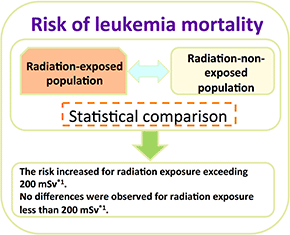
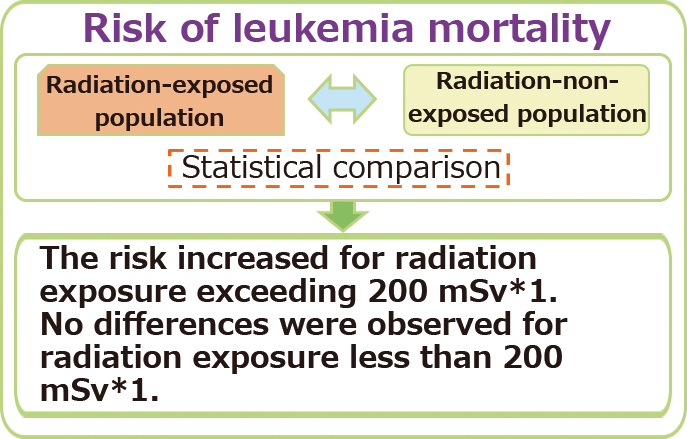
Another report which analyzed the same data of atomic bomb survivors shows that for the population exposed to radiation from 0 to 125 mSv, it was statistically confirmed that the risk of cancer mortality increases as the exposure dose increases.
However, for the population exposed to radiation from 0 to 100 mSv, no statistically significant difference was observed between radiation doses and the cancer mortality risk.
*2 Data covering all solid tumors
(Preston et al. 2003; Data on atomic bomb survivors
in Hiroshima and Nagasaki)
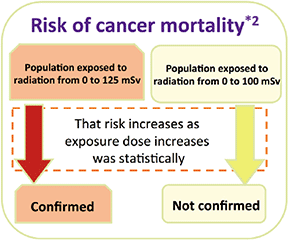
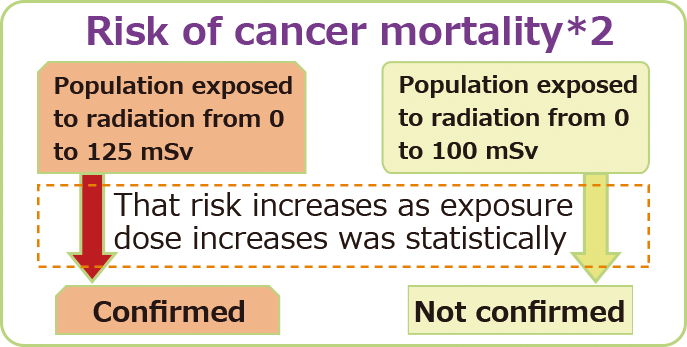
For more details on each of these evaluations, see page 56 of Vol. 2, FY2022 edition.


